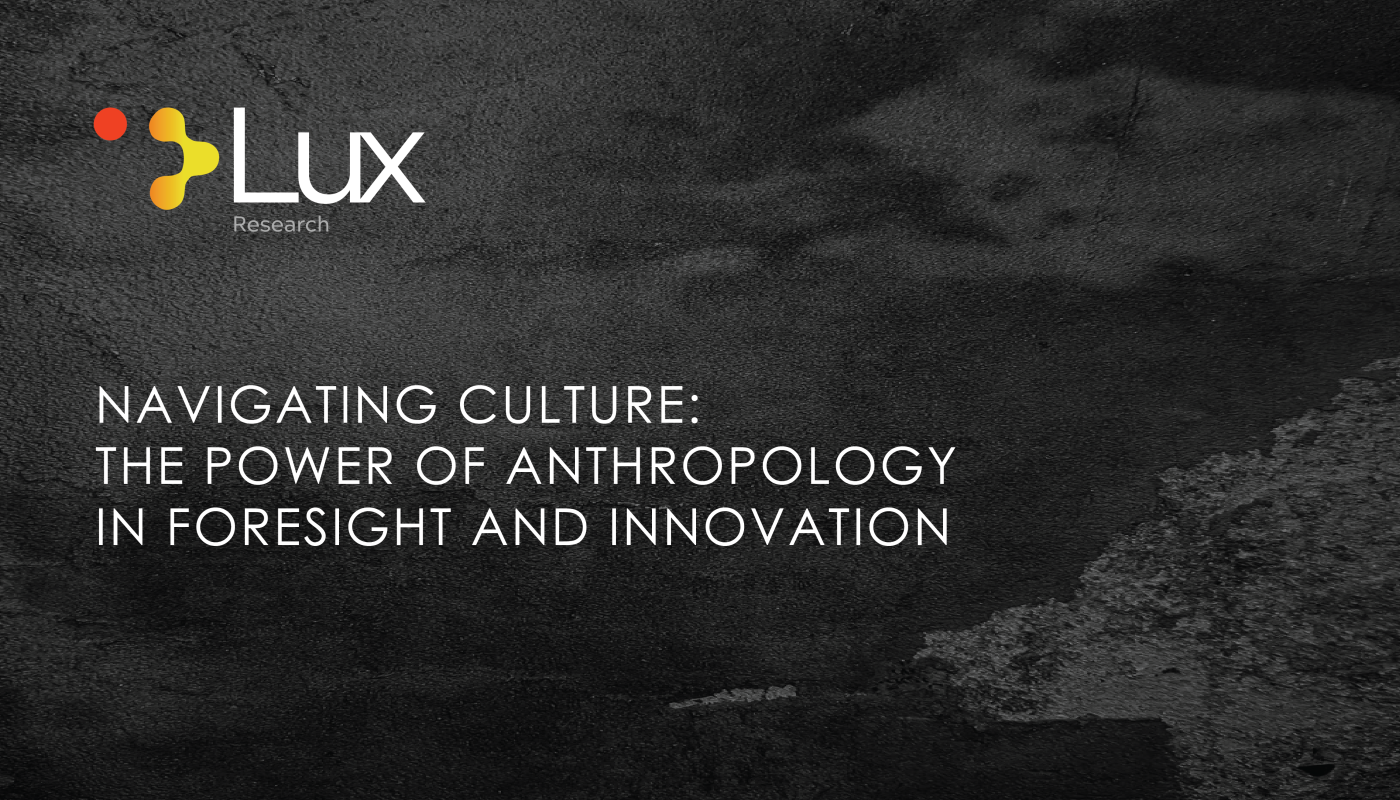What is Culture?
Culture is a term that is often used in various contexts, but what does it really mean? In anthropology, culture refers to the shared meanings or beliefs held by a group of people. A group can be as big or as small as one can imagine, and there are no restrictions on its size. Culture is simply a set of shared meanings. This definition of culture is important because it means that culture can be anything and everything. Products operate within a culture, and there are cultures of organics, natural skincare, wellness, supplements, and more. If consumers have a shared set of meanings that they associate with an idea, a category, or even a brand, then that is a culture. From a social science standpoint, culture refers to the symbols, language, beliefs, values, and artifacts that are part of any society. Culture consists of the values, beliefs, systems of language, communication, and practices that people share in common and that can be used to define them as a collective.
The power of anthropology to understand culture is becoming increasingly recognized in the business world. More and more companies are building capabilities around what they call “culture,” which is fantastic and a great start to making an insights organization truly human-centric. However, there are still some gaps in the way organizations approach these capabilities.
“Culture is not static but rather dynamic and constantly changing. Cultural studies researchers generally investigate how cultural practices relate to wider systems of power associated with or operating through social phenomena.”
For example, organizations tend to think of culture as something that happens outside of their day-to-day business context, not within it or around it. This can lead to a disconnect between the cultural insights program and the insights program as a whole. It’s important to understand how social issues naturally impact the business and not separate the cultural insights program from the insights program. Culture is not static but rather dynamic and constantly changing. Cultural studies researchers generally investigate how cultural practices relate to wider systems of power associated with or operating through social phenomena. A tangible example of this can be seen in the movement toward “body neutrality.” This cultural shift is often seen by organizations as something that needs to be examined as a potential area to positively impact through their brand.
While this is commendable, it would be more effective for organizations to see social change as something that is all around them, rather than something that happens outside of their business.
Over the last couple of years, the movement around “body positivity” has morphed into a movement toward “body neutrality,” giving birth to a new set of meanings along the way which directly impact the beauty, apparel, food, healthcare, and even the recreational goods industry. If a company operates in any of these categories, they can’t afford to think about such shifts as things for their social responsibility or brand strategy teams to focus on. If they do so, they will find their products and solutions irrelevant faster than they can imagine.
Digging deeper into how this help you in your business?
Anthropology, as the study of human societies and cultures, offers valuable insights into the complexities of culture and its impact on various aspects of human life. In the context of business and innovation, understanding the dynamic nature of culture is crucial for companies to stay relevant and responsive to the ever-changing needs and preferences of their consumers.
THE ESSENCE OF CULTURE
In the vast tapestry of human existence, culture weaves its intricate patterns, influencing the way people perceive the world, understand themselves, and engage with others. As anthropologists, we embark on a journey to explore the essence of culture—a complex web of shared meanings, beliefs, values, practices, and symbols that characterize diverse groups of people.
The more we embrace the power of anthropology the more it reveals that culture plays a pivotal role in shaping individual and collective identities. From the moment a child is born, they are immersed in a cultural environment that molds their beliefs, customs, and values. This cultural imprint becomes the foundation upon which individuals construct their sense of self and their place within their social fabric.
“omoiyari” (おもいやり)
To illustrate this point, let us explore the fascinating world of Japanese culture. In Japan, the concept of “omoiyari” (おもいやり) holds great importance, representing a deep sense of empathy and consideration for others. This cultural value influences various aspects of Japanese society, from the polite and respectful interactions between individuals to the design of public spaces that prioritize communal harmony. To illustrate a similar cultural concept in American culture, let’s delve into the concept of “Southern Hospitality.” In the southern regions of the United States, such as states like Georgia, Texas, and Tennessee, Southern Hospitality is a cherished cultural value that mirrors the Japanese concept of “omoiyari.” Southern Hospitality encompasses a deep sense of warmth, friendliness, and generosity towards others, especially to guests and strangers. It is ingrained in the way people interact with one another and extends to various aspects of daily life. From offering a friendly smile and a warm greeting to holding the door open for others, these small gestures exemplify the spirit of Southern Hospitality.
In social gatherings and events, hosts in the South go to great lengths to make their guests feel comfortable and welcome. Whether it’s a family
gathering, a neighborhood barbecue, or a community event, Southern hosts ensure that their guests are well-fed and cared for. This hospitality also extends to providing a listening ear and offering help or support when needed, reinforcing the culture of empathy and consideration for others. The concept of Southern Hospitality also influences the design and atmosphere of public spaces in the South. Many public places, like restaurants, hotels, and parks, emphasize creating a warm and inviting ambiance that fosters a sense of community and connection among people. Visitors often comment on the friendly and welcoming atmosphere they experience when visiting the South, which is a testament to the cultural
value of Southern Hospitality. Furthermore, in the South, offering assistance to others, even strangers, is considered a natural extension of this cultural value. Whether it’s helping someone change a flat tire on the side of the road or offering directions to a lost traveler, the idea of being considerate and empathetic towards others is deeply ingrained in the Southern way of life.
Like “omoiyari” in Japanese culture, Southern Hospitality is a cultural thread that weaves people together and fosters a strong sense of community and connection. It is a powerful cultural value that influences the way people interact, shaping social norms and behaviors that prioritize the well-being and comfort of others. Just as understanding “omoiyari” in Japanese culture provides insights into the Japanese way of life, recognizing the
significance of Southern Hospitality in American culture offers valuable perspectives into the friendly and welcoming nature of the Southern
states. These cultural insights can be instrumental for businesses and organizations operating in the region, allowing them to create human-centric
experiences that resonate with the local community and foster meaningful connections.
THE SYMBOLISM OF CULTURAL ARTIFACTS
Within the framework of culture, symbols and artifacts serve as carriers of shared meanings. They act as threads that interconnect individuals and
communities, transcending language barriers and geographic distances. From ancient cave paintings to contemporary digital emojis, symbols facilitate communication and evoke emotions that are deeply rooted in cultural contexts. As an example, consider the iconic American symbol of the Statue of Liberty. For many, it represents freedom, opportunity, and the promise of a better life. This powerful symbol resonates not only with
Americans but also with countless immigrants who have sought refuge and opportunity on American shores. The Statue of Liberty embodies the collective cultural narrative of the United States as a land of opportunity and inclusion.
CULTURAL PRACTICES: A LIGHTHOUSE IN THE DARKNESS OF UNCERTAINTY
Cultural practices act as beacons that guide individuals through life’s uncertainties, providing a sense of continuity and belonging. Rituals, traditions, and ceremonies lend structure and meaning to life’s transitions, fostering a sense of community and reinforcing shared values.
Take, for instance, the celebration of Chinese New Year, a tradition steeped in symbolism and cultural significance. Families come together to usher in the new lunar year, paying homage to ancestors, exchanging red envelopes symbolizing good luck, and indulging in festive feasts. This cultural practice serves as a bridge between generations, reinforcing family bonds and a shared cultural identity. An American example that holds similar cultural significance and serves as a bridge between generations is the celebration of Thanksgiving. Thanksgiving is a beloved national holiday in the United States, observed on the fourth Thursday of November. It is a time for families and friends to come together, express gratitude, and share a festive meal. Thanksgiving has deep historical roots, dating back to the early 17th century when English Pilgrims and Native Americans shared a harvest feast to give thanks for a successful crop and a year of survival. Over time, this tradition evolved into a national holiday, symbolizing unity, gratitude, and the spirit of cooperation between diverse cultural groups.
During Thanksgiving, families gather around the table to share a bountiful meal, usually consisting of a roasted turkey, stuffing, cranberry sauce, mashed potatoes, and pumpkin pie, among other dishes. The preparation of this meal often involves passed-down recipes and culinary traditions, creating a sense of continuity and cultural heritage. Similar to the Chinese New Year, Thanksgiving serves as a bridge between generations. Families often pass on recipes and cooking techniques from one generation to the next, preserving culinary traditions that evoke nostalgia and a sense of shared history. The act of cooking and sharing the Thanksgiving meal fosters a connection between family members and strengthens their cultural identity. Beyond the family setting, Thanksgiving is also an opportunity for communities and organizations to come together. Many
people volunteer at soup kitchens and community events to serve meals to those in need, embodying the spirit of compassion and giving back to the community.
Another important aspect of Thanksgiving is the expression of gratitude. During the holiday, people take time to reflect on their blessings and express appreciation for the positive aspects of their lives. This practice reinforces the value of gratitude and the importance of acknowledging the
support and love received from family and friends.
Thanksgiving has become a cherished American tradition that transcends religious and ethnic backgrounds. It unites people of different cultural
backgrounds in the shared experience of giving thanks and celebrating abundance. The holiday provides an opportunity for cultural exchange as
people from diverse backgrounds come together to celebrate and learn about each other’s traditions and customs.
SUBCULTURES: WEAVING DIVERSITY INTO THE CULTURAL FABRIC
Culture is not monolithic but rather a rich tapestry of subcultures that coexist within larger societies. Subcultures emerge around shared interests, beliefs, or values, forming vibrant and distinct communities that enrich the broader cultural landscape.
Consider the emergence of the organic, natural skincare, wellness, and supplements subcultures. As awareness of health and sustainability grows, these subcultures have gained momentum, advocating for eco-friendly and organic alternatives in the beauty and wellness industry. Within these communities, individuals share a common commitment to ethical consumption, thereby contributing to a larger cultural shift towards conscious living. The shift from “body positivity” to “body neutrality” has had a significant impact on the Consumer Packaged Goods (CPG) industry, particularly in sectors related to beauty, fashion, and healthcare. This cultural change has influenced consumer preferences and expectations, prompting companies to adapt their messaging and product offerings to align with the emerging values of body neutrality. One way this has impacted the CPG industry is in the marketing and advertising strategies of beauty and fashion brands. Traditionally, beauty and fashion advertising have often relied on promoting certain beauty standards and body ideals that may have contributed to body image issues and unrealistic expectations. However, as the concept of body neutrality gained traction, consumers began to seek more authentic and inclusive representations in advertisements.
Moreover, the movement towards body neutrality has encouraged CPG companies to consider inclusivity and representation in their product offerings. In the beauty and fashion industries, brands have expanded their shade ranges to include a broader spectrum of skin tones, acknowledging the diversity of their consumers. Similarly, fashion brands have launched inclusive clothing lines that cater to a range of body shapes and sizes, making fashion more accessible and affirming for all consumers.
In the healthcare sector, the concept of body neutrality has also influenced product development and messaging. Traditionally, some healthcare products and services were marketed based on the premise of “fixing” or “improving” one’s appearance, which could reinforce negative body image perceptions. With the rise of body neutrality, there has been a greater emphasis on promoting products and services that prioritize overall well-being and self-care without focusing solely on appearance-related outcomes.
For instance, skincare brands have shifted their messaging to highlight the importance of self-care and skin health rather than solely promoting flawless or “perfect” skin. Healthcare products that focus on promoting holistic well-being, such as vitamins and supplements marketed for overall health and energy, have gained popularity as consumers prioritize feeling good from the inside out.
To adapt to this cultural shift, many beauty and fashion brands started featuring diverse body types and promoting body acceptance and selflove in their marketing campaigns. They moved away from focusing solely on appearance and embraced messages that celebrate individuality and
emphasize the idea of feeling comfortable and confident in one’s own body. By doing so, these brands were able to resonate with a broader audience and attract consumers who appreciated the shift towards body neutrality.
EMBRACING THE FLUIDITY OF CULTURE: AN EVER-EVOLVING CANVAS
One of the most remarkable aspects of culture is its fluidity— a dynamic force that adapts to changing times and circumstances. Cultural evolution is a reflection of the ever changing world, where social, political, economic, and technological shifts continuously shape cultural practices and beliefs.
An illustrative example of cultural fluidity can be found in the realm of food and dietary preferences. As society becomes more health-conscious and environmentally aware, there has been a noticeable shift in dietary trends and cultural attitudes towards food. In the past, certain foods or diets were considered fashionable or trendy, leading to widespread adoption among certain segments of the population. However, with the
growing emphasis on health, sustainability, and ethical considerations, these trends have given way to more conscious and mindful food choices.
For instance, the rise of veganism and plant-based diets exemplifies the cultural fluidity in food preferences. Veganism, once considered a niche or radical concept, has gained mainstream acceptance and popularity as more people recognize the environmental and ethical implications of animal agriculture. This cultural shift towards plant-based diets has had a profound impact on the food industry. Food companies and restaurants have responded to this cultural change by expanding their offerings to include plant-based alternatives. Major fast-food chains now offer vegan burgers, and grocery stores stock a wider array of plant-based options, ranging from dairy-free milk to meat substitutes made from plant proteins. This adaptation not only caters to the growing demand for plant-based products but also aligns with the cultural values of sustainability and ethical consumption.
Furthermore, this cultural fluidity in food preferences has sparked innovation in the CPG industry. Brands are now investing in research and development to create sustainable packaging materials, reduce food waste, and source ingredients responsibly. The focus on conscious consumption has influenced the way companies approach product development, packaging, and marketing. The shift towards mindful food choices has also influenced how food is marketed and presented to consumers. Advertisements and packaging now emphasize health benefits,
environmental impact, and ethical sourcing. Brands that embrace these cultural values are more likely to resonate with consumers seeking
products that align with their personal values and beliefs. In the beauty and personal care industry, a similar cultural fluidity is observed. As
awareness of sustainability and clean beauty practices grows, consumers are increasingly drawn to products that prioritize natural and eco-friendly ingredients.
This cultural shift has led to the emergence of a niche market of clean beauty products, appealing to individuals who seek non-toxic and environmentally conscious alternatives. Cosmetic companies have recognized this shift and are reformulating their products to eliminate harmful chemicals and incorporate more sustainable packaging. They are also transparently communicating their commitment to ethical and eco-friendly practices to build trust with consumers.The Anthropological Lens on Business: Anthropology offers a unique perspective on business by examining how culture influences consumer behavior, market trends, and innovation. As anthropologists, we recognize that businesses cannot operate in isolation from the cultural currents that shape their consumer base. Embracing anthropology as a tool for understanding culture empowers organizations to create human-centric solutions that resonate deeply with their target audiences.
WHAT CULTURE MEANS TO BUSINESS
In the realm of business, culture is not an external element but an integral part of the day-to-day operations. Understanding culture is crucial for successful innovation and foresight, as it influences consumer behavior, preferences, and societal trends. To harness the power of anthropology in this context, organizations must recognize that cultural insights should be seamlessly integrated into their overall insights program, providing a holistic understanding of the market dynamics.
UNDERSTANDING CULTURE DRIVES SENSITIVITY IN INNOVATION
Anthropology emphasizes the significance of cultural sensitivity, acknowledging the diverse values and practices across different communities. In today’s globalized business landscape, it is vital for companies to understand and respect cultural nuances to adapt their offerings to different markets successfully. By embracing cultural sensitivity, businesses can build stronger relationships with consumers, creating products and services that align with local preferences and needs.
UNDERSTANDING CULTURE ORGANIZATIONS EMBRACE SOCIAL CHANGE
Businesses that thrive in the modern era view social change as an intrinsic part of the cultural landscape, rather than an isolated phenomenon. By recognizing the interplay between culture and social dynamics, organizations can proactively respond to cultural shifts and align their strategies with evolving societal values. This approach not only ensures their relevance but also enables them to make a positive impact on the communities they serve. As we will see in the following eBooks to come, understand culture and anthropology can provide a valuable lens for businesses to understand the dynamic and ever-changing force that influences societies and drives consumer behavior. By integrating anthropological insights into their practices, organizations can navigate the complexities of the cultural landscape, stay relevant, and create meaningful innovations that resonate with diverse audiences. As we embark on this journey, let us continue to explore the transformative potential of anthropology in driving foresight and innovation for businesses worldwide. By embracing culture as a guiding compass, organizations can navigate the dynamic currents of the market and thrive in an interconnected and culturally diverse world.
About Lux
Our mission is to advise leaders about commercially viable science and technology to enable sustainable innovation. We deliver research and
advisory services to inspire, illuminate, and ignite innovative thinking that reshapes and grows businesses. Using quality data derived from primary
research, fact-based analysis, and opinions that challenge traditional thinking, our experts focus on finding truly disruptive innovations that are also realistic and make good business sense. The “Lux Take” is trusted by innovation leaders around the world, many of whom seek our advice directly before placing a bet on a startup or partner — our clients rely on Lux insights to make decisions that generate fantastic business outcomes. We pride ourselves on taking a rigorous, scientific approach to avoid the hype and generate unique perspectives and insights that
innovation leaders can’t live without.
If you would like to hear more about the use of big data in qualitative research, check out the upcoming Qual360 Europe and North America editions. All quoted speakers will present live at the Qual360 North America edition on March 13&14 in Washington.



















